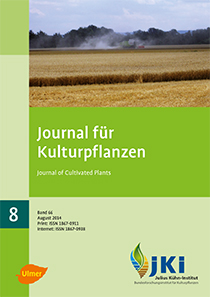What is stored product protection, what is meant by the term post-harvest, where does plant protection end? An explanation in terms of the development of specific guidelines for integrated pest management in the sector stored product protection
Keywords:
Stored product protection, Post harvest, Integrated pest management (IPM), GuidelinesAbstract
The German term ‘Vorratsschutz’ i.e. ‘stored product protection’ is often similarly used for the corresponding but more overall term ‘Nachernteschutz’ i.e. ‘post harvest protection’. This colloquial use does not identically match the meaning of the original word ‘Vorratsschutz’. But when developing specific guidelines for integrated pest management in the matters of ‘stored product protection’ (see ‘National Action Plan for the sustainable use of pesticides’ by the Federal Government, 2013) the term ‘Vorratsschutz’ is the more suitable one according to its strict definition from the German Plant Protection Act, being a specific measure for the protection of products of plant origin in an unprocessed state or having undergone only simple preparation. In order to avoid confusions the authors suggest to distinguish ‘Vorratsschutz’ from ‘Nachernteschutz’. The latter refers more to perishable crops. Because of applications for hygienic reasons and the great number and variety of biocides containing active substances also approved for plant protection products future guidelines for integrated pest management in stored product protection should consider these biocidal products as well. In particular, the resistance management as required by the general principles of Integrated Pest Management (IPM), laid down in the Directive 2009/128/EC Annex III, should be taken into account.
DOI: 10.5073/JfK.2014.08.02, https://doi.org/10.5073/JfK.2014.08.02
Downloads
Published
Issue
Section
License
The content of the journal is licensed under the Creative Commons Attribution 4.0 License. Any user is free to share and adapt (remix, transform, build upon) the content as long as the original publication is attributed (authors, title, year, journal, issue, pages).
The copyright of the published work remains with the authors. The authors grant the Journal of Cultivated Plants, the Julius Kühn-Institut and the OpenAgrar repository the non-exclusive right to distribute and exploit the work.







